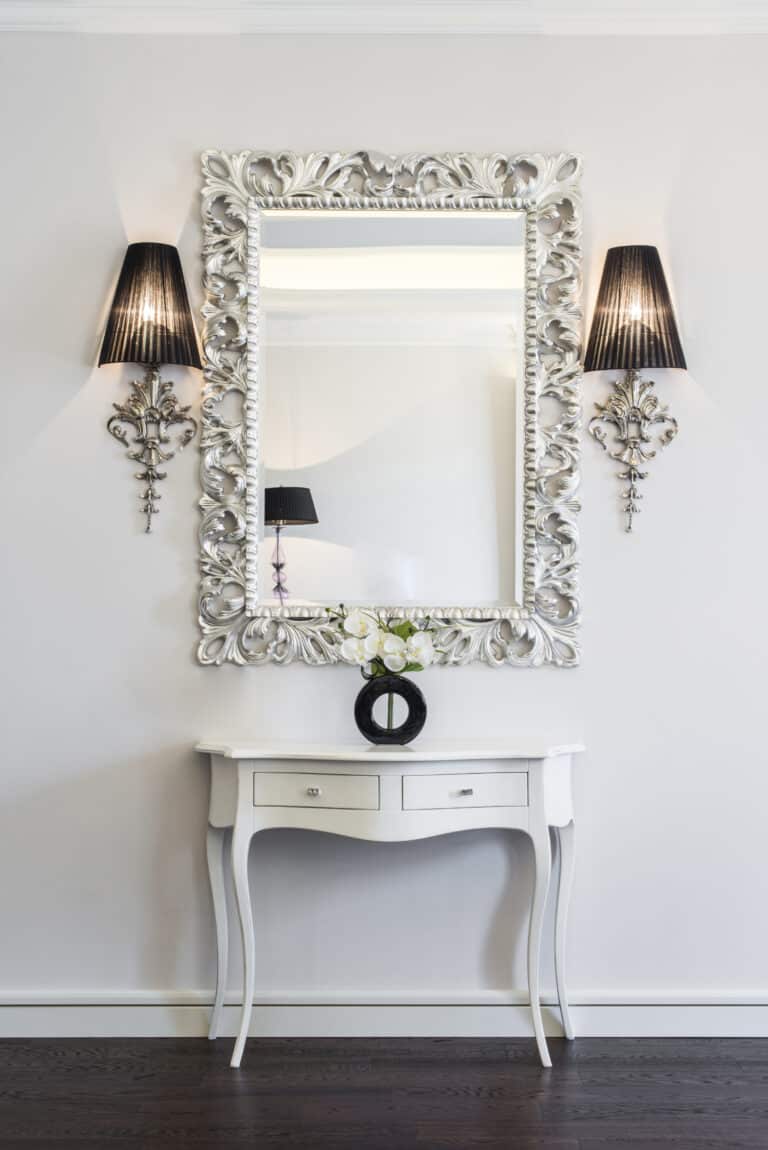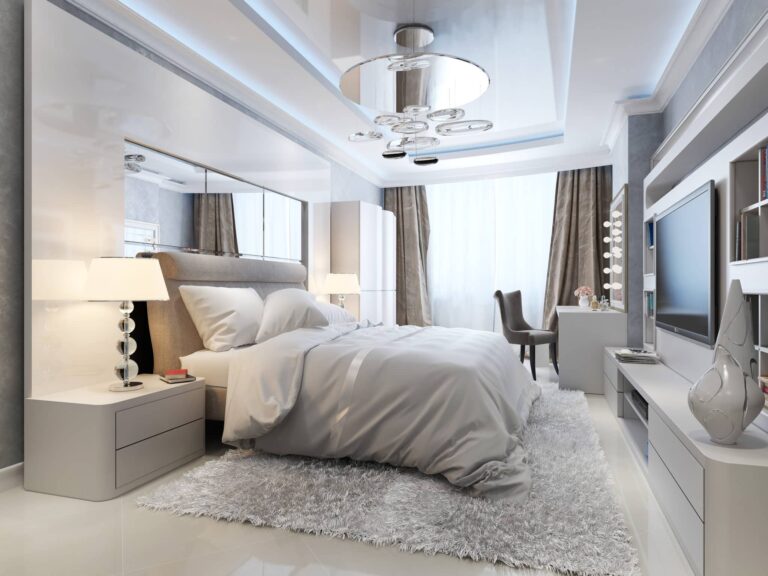Mirrors are a staple in any home décor. Not only do they serve a functional purpose, but multiple mirrors placed around the home help create the illusion of space and light. Having the perfect mirror placement, your space can appear larger and brighter.
For example, a mirror placed opposite a window will reflect the natural light, making the room feel more open and airy. Mirrors can also create focal points and a full-length mirror adds interest to a blank wall – an antique mirror will add a touch of elegance, while a brightly colored frame will add a pop of color.
Whether you choose a simple round mirror or an ornate frame, mirrors are a great way to personalize your space and add a touch of style to any interior design. With that in mind, here is a complete guide to mirror placement in your home.
Deciding the Rooms
Many different rooms in the home typically benefit from the presence of a mirror. The most obvious room is the bathroom, where you have to check your appearance before starting your day. Mirrors can also be useful in:
- Bedrooms
- Living rooms
- Dining rooms
- Hallway and entryway
- Kitchen
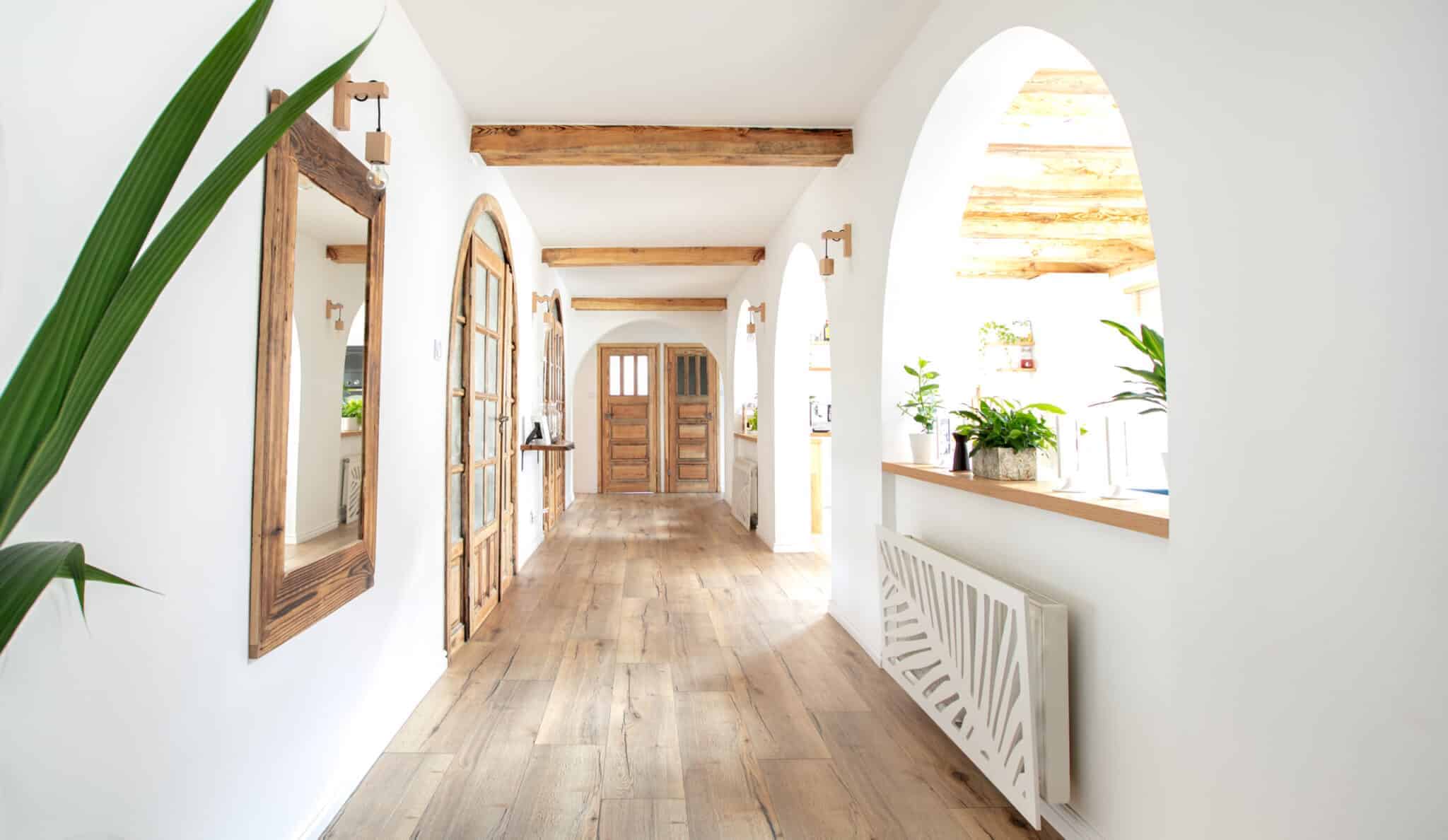
Mirror Placement By Room
There’s no one-size-fits-all answer when it comes to mirror placement. It depends on the size and layout of your space, as well as your personal preferences. However, a few things to keep in mind will help you achieve the best results.
Bathroom Vanity Mirror Placement
A vanity bathroom mirror is a must-have for bathrooms. These mirrors are typically mounted above the sink and offer a clear view for applying makeup, shaving, or brushing teeth. If you have a small bathroom, you may want to choose a wall-mounted mirror to save space. For a larger bathroom, consider adding a floor-length large mirror to give yourself plenty of head-to-toe viewing area. You can also install a wall-hanging mirror with an adjustable arm directly across from the mirror on the sink wall. This way, you can have a good view of the back of your head without juggling a hand-held mirror. Here are some bathroom vanity mirror placement ideas to help you get the most out of your mirrors:
- Ensure that the mirror is placed roughly 60″ from the floor or at eye level so you can see yourself clearly when standing in front of it. If you have a taller faucet, adjust slightly and hang the mirror 2-3″ above the tallest point of the faucet for the best look.
- Consider the lighting in your bathroom. You’ll want to place the mirror where it will be evenly lit so that you can see yourself properly when applying makeup or doing your hair. Basically, the distance between the vanity light and the mirror should be such that the light does not cast shadows on the face.
- Think about how much traffic will be passing by the mirror. If it’s in a busy area, you may want to choose a style that is shatterproof or has a protective coating.
Bedroom Mirror Placement
Placing a mirror in your master bedroom can create a beautiful focal point, but it’s important to consider the mirror’s size, shape, and placement to ensure it complements your space. For example, a large rectangular mirror above a dresser will provide a classic look, while a round mirror placed in an empty corner can help to add dimension to the room. Here are a few tips to help you place your bedroom mirrors for the best effect:
- Place a mirror above your dresser or vanity for a convenient place to check your appearance before heading out for the day.
- Avoid placing the mirror directly across from the bed, as this can create an unsettling feeling when trying to sleep. Instead, try hanging the mirror on a different wall or positioning it so that it reflects another piece of furniture in the room.
- Place the mirror near your clothes storage. if you prefer a dressing area
A great DIY option is to attach the mirror to the closet door using double-sided adhesive tape that can support the weight of the mirror. But a better option is to have modern mirror closet doors professionally installed in your bedroom.
Living Room Mirror Placement
Mirrors in the living room can serve both functional and aesthetic purposes. When placed correctly, mirrors can help reflect light and make a space appear more open and spacious. They can also be used to create visual interest or to highlight certain architectural features. A large frameless mirror or custom size mirror in a small living room can make it seem more open and inviting. However, placement is key when working with mirrors in the living room.
For the best results, choose a spot that will reflect a good view, such as over a fireplace, over a mantle, next to a piece of artwork, or on a gallery wall. If you’re placing the mirrors opposite windows, position them at an angle so they can reflect natural light without creating a glare.
Dining Room Mirror
One of the most important considerations when hanging a mirror in the dining room is the placement of the mirrored surface in relation to the dining table. The general rule of thumb is to hang the mirror to reflect the table and at least one wall sconce. This will create a more balanced and evenly lit space, making it ideal for dining and entertaining.
When choosing the perfect mirror for your dining room, it is important to consider both style and functionality. A well-placed mirror can help brighten up the space and make it feel more inviting while also serving as a practical tool for checking your appearance before sitting down to enjoy a meal.
Kitchen Mirror Placement
When choosing where to hang kitchen mirrors, it is important to consider the layout of the room and the tasks that will be performed there. For example, a mirror above the stove can be used to check food while cooking. A mirror placed near the sink can be useful for brightening the areas and washing dishes or preparing food.
Mirrors can also be placed on the backsplash to help reflect light and expand the space. While at it, it’s important to pay attention to shape and size. Smaller kitchens work best with round or oval mirrors, while large ones pair well with rectangular mirrors.
Hallway Mirror Placement
Placing a mirror in the hallway is a great way to create the illusion of space and add a decorative touch to your home. Where you’ll place the mirror depends on the size and layout of your hallway. For example, if you have a long and narrow hallway, placing a mirror at the end will help make the space appear wider.
If you have a short and wide hallway, hanging a mirror on one of the side walls will help to create the illusion of depth. It is generally best to avoid placing mirrors opposite each other, as this can create a confusing and disorienting effect.
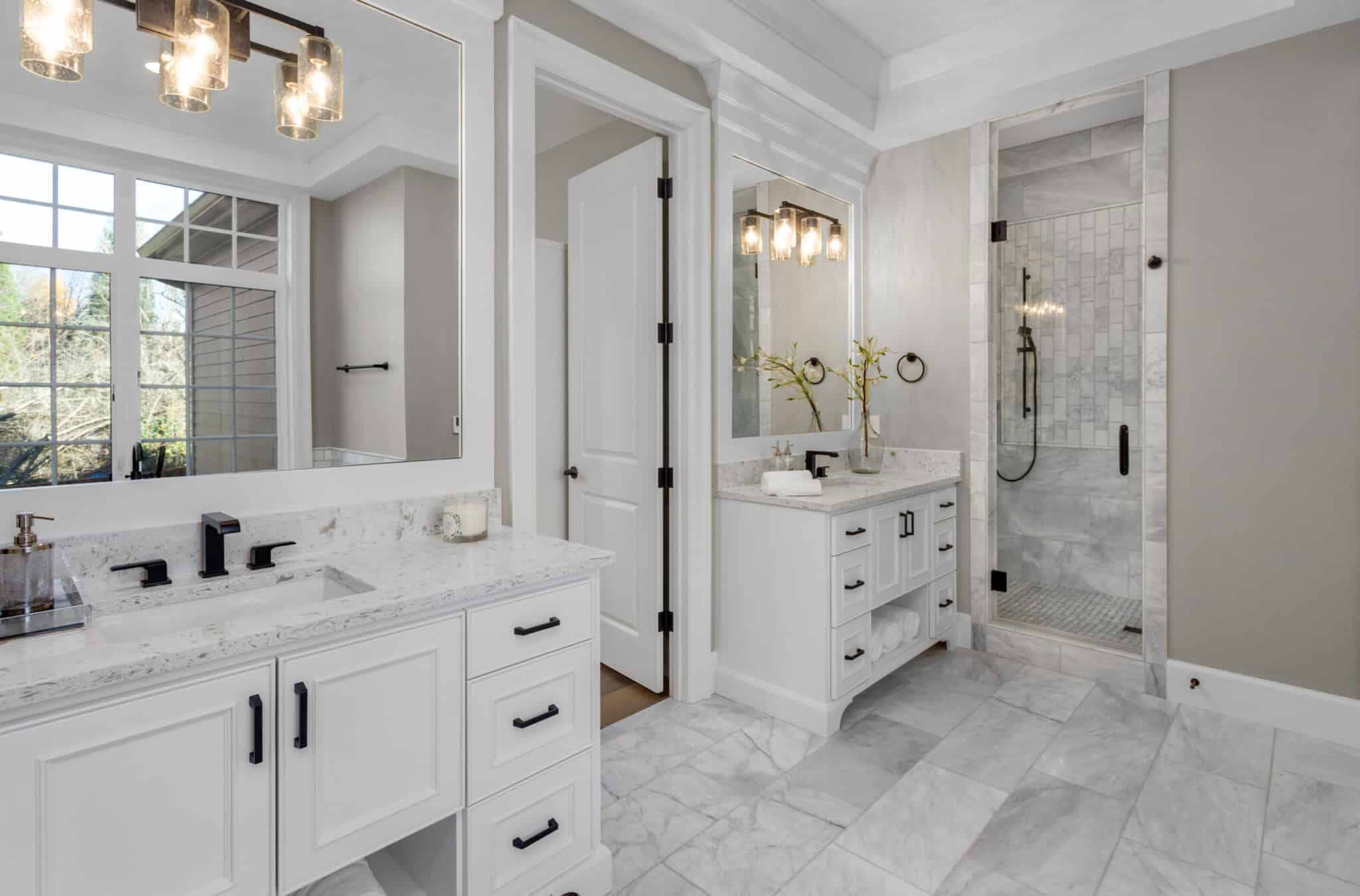
Tips for the Best Wall Mirror Placement in Your Home
When it comes to mirrors, placement is everything. A well-placed mirror can brighten a room, open up a space, and reflect light to create the illusion of more space. On the other hand, a poorly-placed mirror can make a room feel cramped and distorted. So how do you know where to put a mirror? Here are a few guidelines to help you get it right.
Consider the Function
When it comes to mirror placement, it’s important to consider the function of the mirror. For example, if you’re placing a mirror in a dressing room, you’ll want to ensure it’s positioned so you can see your entire outfit. On the other hand, if you’re hanging a mirror in a bathroom, you’ll want to make sure it’s at a comfortable height for shaving or applying makeup.
Consider the Height at which the Mirror Will Be Hung
The height at which a mirror is hung can significantly impact a room’s overall look and feel. For example, a mirror hung too high will make the room feel taller, while a mirror hung too low will make the room feel shorter. The ideal height for a mirror depends on the size of the room and the furniture. Generally, mirrors should be hung, so they are at eye level when standing in front of them. This will create a sense of balance and proportion in the room.
However, there are exceptions to this rule. For example, a mirror hung higher on the wall in a small room can create the illusion of more space. Conversely, a mirror hung lower on the wall in a large room can help intimate the space and make it feel cozier. Ultimately, the best way to determine the ideal placement for a mirror is to experiment with different heights until you find the perfect balance for your space.
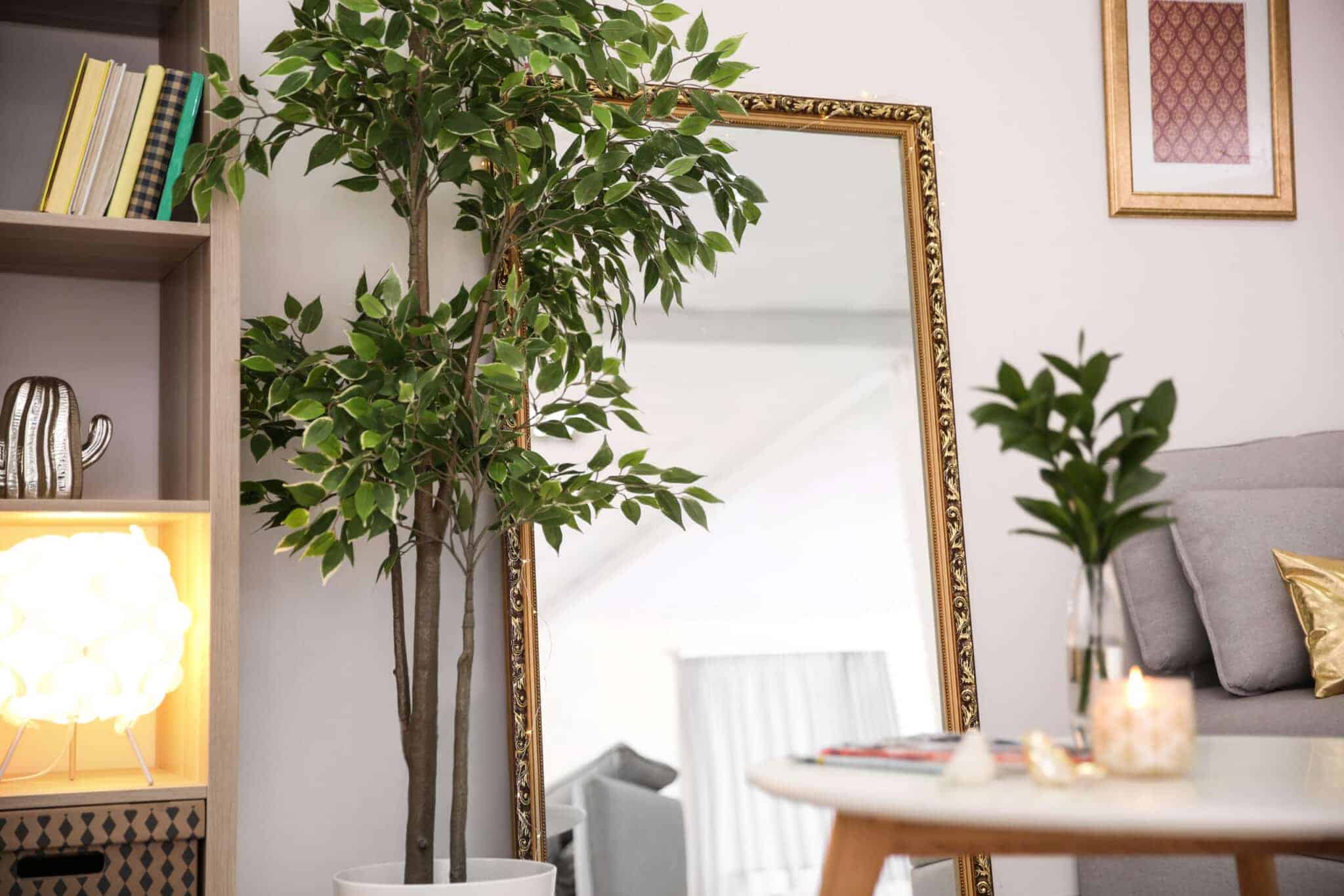
Consider What it Reflects
A well-placed mirror can reflect light and create the illusion of a larger room, while a poorly placed mirror can make a space feel cramped and cluttered. For example, if you have a cluttered area in your home, placing a mirror to reflect that area will only serve as a constant reminder of the clutter. On the other hand, if you place the mirror in a spot where it reflects something that you love, such as a beautiful piece of art or a stunning view, then it can be a very effective addition to your home décor.
A mirror placed opposite a window will reflect the outdoors and bring natural light into the room, while a mirror placed along a wall will create the illusion of more space. Mirrors can also reflect interesting architectural features or objects within a room, adding depth and interest to the space.
Position Near Windows
When deciding where to place a mirror in a room, it is important to consider the window’s location. If you’re looking to brighten up the space, placing the mirror opposite the window might be best to reflect the natural light into the room.
And if you are trying to make a small room appear larger, you may want to place the mirror next to the window, so it reflects the outdoors and creates the illusion of more space. Alternatively, you can use artificial lights to achieve the same effects.

Consider a Grouping
One simplest and most effective way to use wall mirrors is in a grouping. You can create a statement piece that reflects light and your sense of style by hanging several mirrors together. When choosing mirrors for a grouping, consider the overall size of the mirrors and their shapes.
For example, a mix of square and round mirrors will add visual interest, while a set of identical mirrors will create a more uniform look. Once you’ve selected the right mix of mirrors, the next step is deciding on the perfect placement. Basically, you want to leave space between each so they don’t appear too crowded. A good rule of thumb is to leave about 6 inches of space between each mirror.
Call The Glass Guru
If you’re looking to add a touch of elegance and sophistication to your home, consider mirror placement. With the help of a professional like The Glass Guru, you can choose the perfect mirrors for your space and get them installed quickly and easily.



